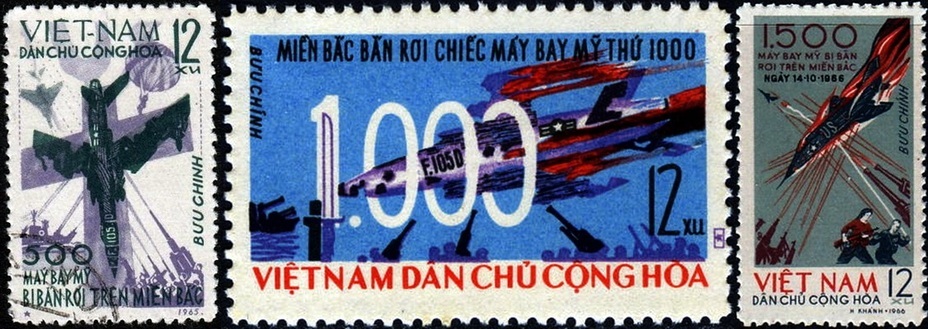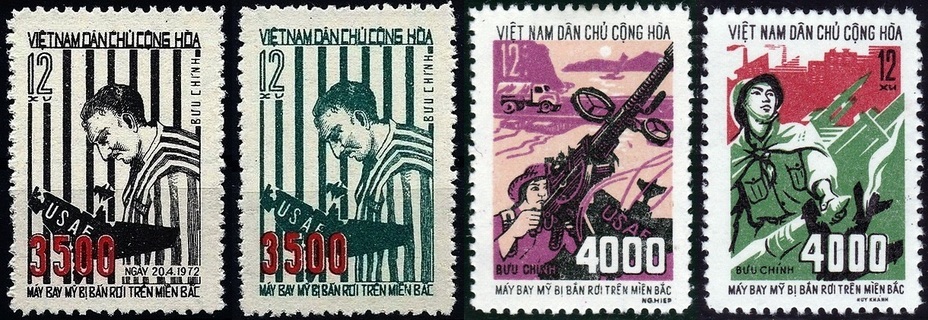A general Curtis E. LeMay, 5th United States Air Force Chief of Staff and undoubtedly the legend of American aviation, stated in the afternoon of his life that the quote «to bomb North Vietnam back into the Stone Age» appeared in his autobiography by the will of a literary processor and he rejected that he said it. General would prefer that the now-common idiom was considered folk but you have to tell it like it is — there were attempts to bring Vietnam to its knees with the help of air raids. Many people think that the Americans could have made more serious efforts and brought the air campaign against North Vietnam to victory, but the Vietnamese themselves had a different opinion on this matter.
Of course, the deliveries from the USSR, which sent anti-aircraft guns and missile systems, as well as fighters, played a decisive role in creating the «air umbrella» over Vietnam, but the successes of the air defense were a legitimate reason for the pride of the Vietnamese. This was unexpectedly reflected in the issue of postage stamps — an inconspicuous but effective feature of propaganda that spreads along with the post all over the world. Nowhere, either before or after the Vietnam War, the success of anti-aircraft gunners and fighter pilots did not find such a response in postage signs.

After issuing the first postage stamp in honor of the 500 downed American planes, the Vietnamese began to celebrate in this way every next five hundred. As a result, philatelists of the world by 1973, when the US Air Force stopped raiding, were able to compile a small collection. «The icing on the cake» was a series of stamps dedicated to the official total of 4181 shot downed aggressor's airplanes and helicopters, that were credited to the air defense of North Vietnam.
The stamps release in 1967 was dedicated to the 2000th victory of the Vietnamese air defense. It has its own interesting history and are drawn from one of the most famous photos of the entire Vietnam war. The picture looks very impressive, and its significance for shaping the image of this conflict in North Vietnam and around the world is difficult to overestimate: a helpless bully in the form of the US Air Force gloomily wanders under the escort of a barefoot Vietnamese girl, armed with a rifle and a bayonet, almost a child who does not reach the prisoner's shoulder. To great effect the artist added flaming wreckage of an airplane on the stamps, which in reality was not there. But first things first.
On September 20, 1965, an F-105D Thunderchief fighter-bomber belonging to the famous 334th tactical fighter squadron was shot down by fire from the ground in North Vietnam on the border with Laos. Pilot Captain Willis E. Forby managed to eject and gave a distress signal. The Americans' rescue service was practiced during the Korean War, so the HH-43B Husky helicopter from the 38th Rescue Squadron immediately took off. There were four crew members on board: commander Captain Thomas J. Curtis, co-pilot 1st Lt. Duane W. Martin, aircraft mechanic Staff Sergeant William A. Robinson, and lifeguard Private Arthur N. Black.

Further events continued even worse for the Americans. As it turned out later, by the time «Huskie» flew to the site of the Thunderchief's crash, Captain Forby was already in captivity, and the helicopter pilots were expected to receive an equally warm welcome: soon the pilots in the area of A-1E Skyraider attack aircraft witnessed like a downed helicopter crashed into the jungle. The saturation of the area with air defense systems was considered too high for the continuation of the rescue operation, and all five aviators were recorded as missing.
Nevertheless, the helicopter crew did not die. On the ground, Curtis, Robinson and Black fell into the hands of the Vietnamese — there were a lot of years of captivity waiting for them, including in the famous prison known as the «Hanoi Hilton», and release from it in February 1973. It is believed to be the longest US military captivity in US history. The fourth aviator, 1st Lieutenant Martin, managed to slip away from the Vietnamese, but his efforts were in vain, and the fate was ultimately unenviable. He fell into the hands of the soldiers of the Lao People's Liberation Army, was held captive, escaped in June 1966, and when, after 18 days of wandering in the jungle, he suddenly collided with a local peasant, he was hacked to death with two blows with a machete.
Perhaps the Vietnamese picked up an escort for Sergeant Robinson specifically for a spectacular shot, but according to the official version, it was this girl who take captive the American. 17-year-old Nguyễn Thị Kim Lai, with a height of 4,8 ft, weighed 81.5 lb, while 22-year-old William Robinson, with a height of 6,6 ft (according to other sources, even 7,2 ft), weighed 275.5 lb. The shot, which was made by Vietnamese journalist Phan Thoan, was simply doomed to success and became a real symbol of the struggle between North Vietnam and the United States. After 30 years, the story got an unexpected continuation when Robinson came to Vietnam and managed to find Thị Kim Lai. By that time, the girl had been married for a long time, had three children and worked as a doctor. This kind of «greetings from the past» was a complete surprise for her.




